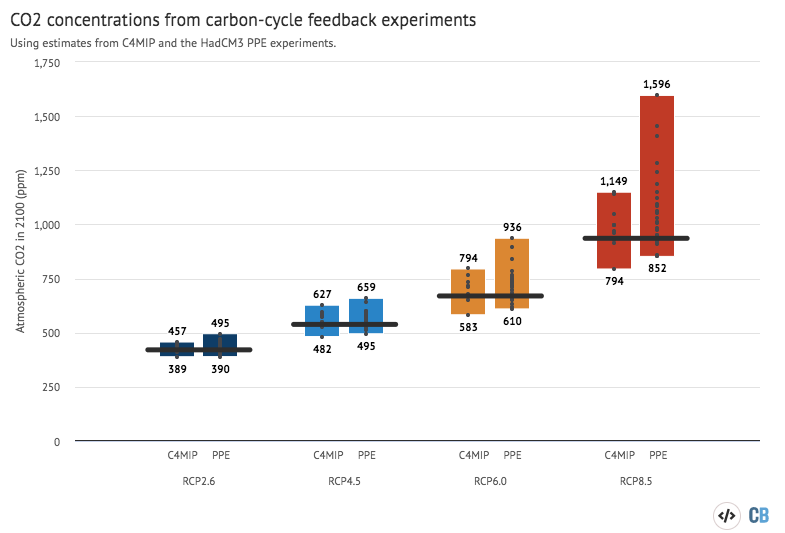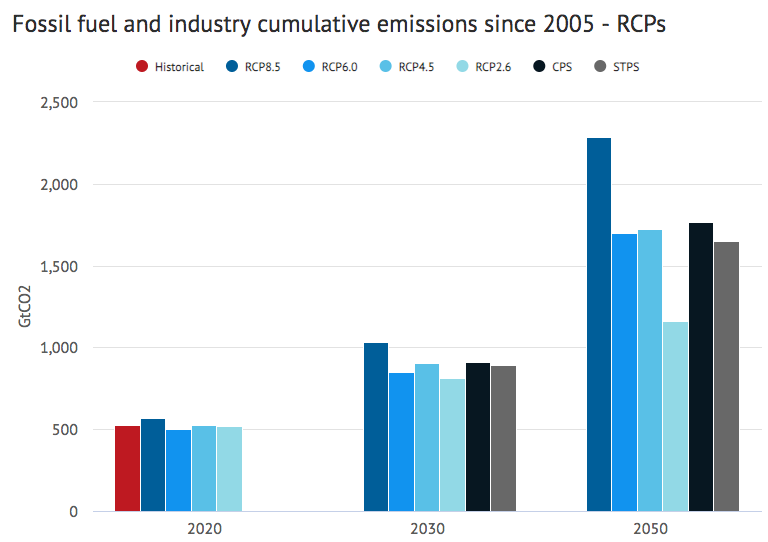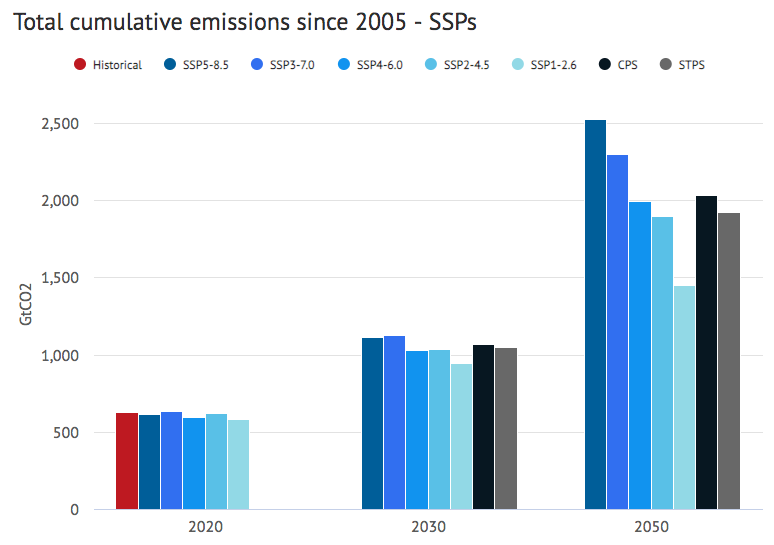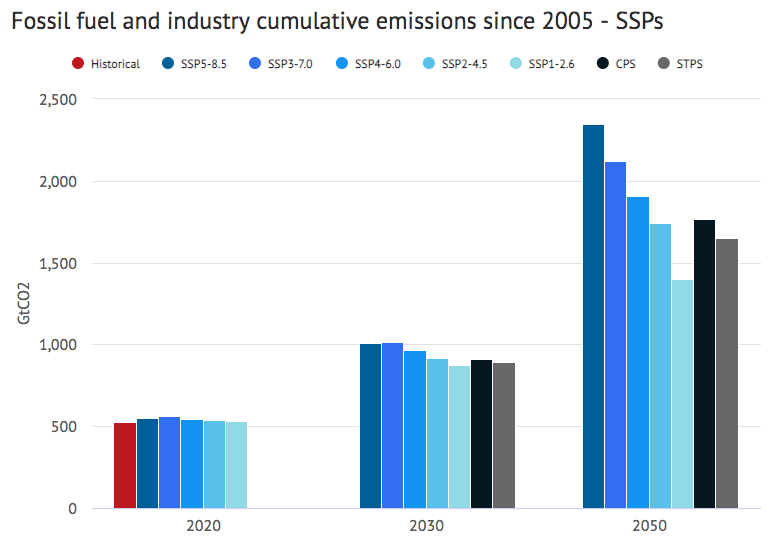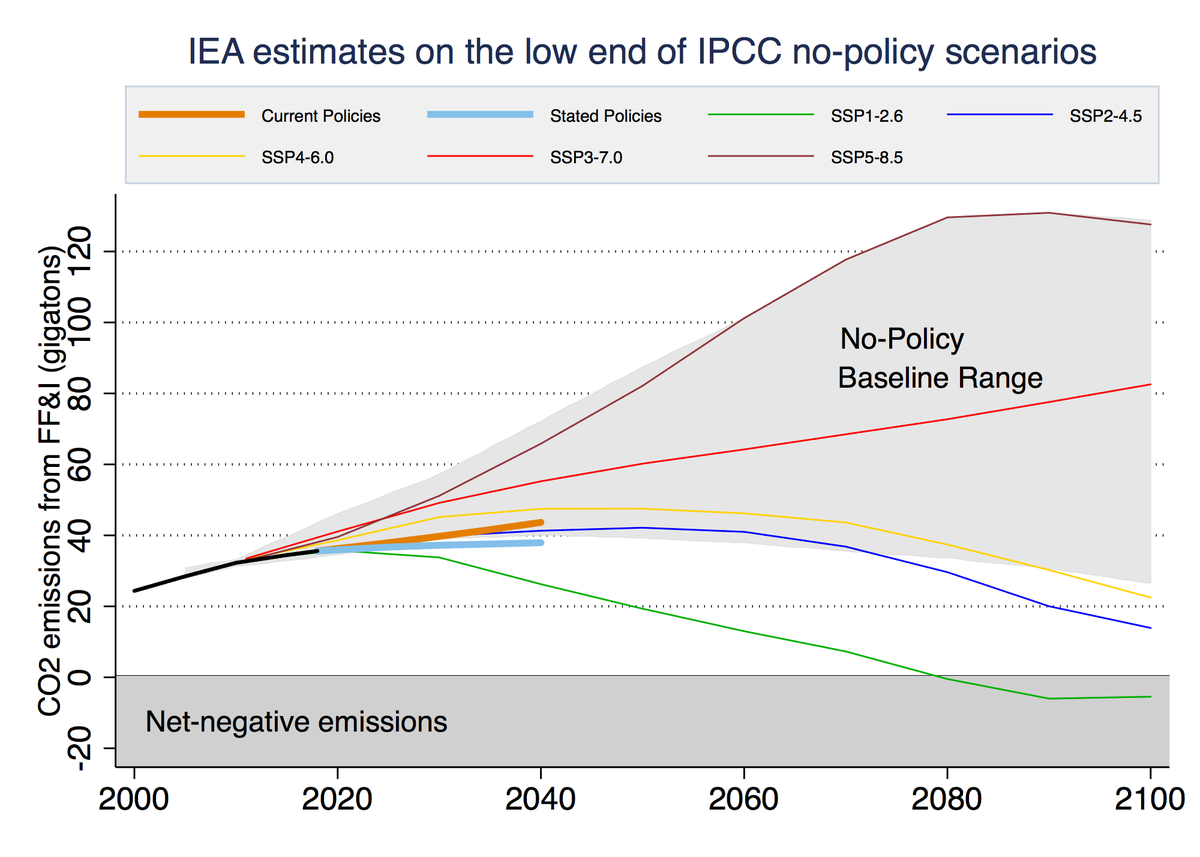PNAS published a defense of the RCP8.5 scenario by the scientists at @woodsholeresctr. While I agree with parts of it, some parts are also a bit incomplete or problematic. Lets take a look: https://phys.org/news/2020-08-worst-case-co2-emissions-scenario-climate.html
1/14">https://phys.org/news/2020...
1/14">https://phys.org/news/2020...
First, while the emissions scenario associated with RCP8.5 (and its 500% coal use by 2100) are increasingly unlikely, that does not mean that the scenario is not useful to have. Its a worst case, and its only misleading when we refer to it as business as usual. 2/14
For example, we could see a world where coal is directly subsidized (as Trump tried to do). We could also get to 8.5 w/m^2 forcing with lower emissions if carbon cycle feedbacks are large: https://www.carbonbrief.org/analysis-how-carbon-cycle-feedbacks-could-make-global-warming-worse">https://www.carbonbrief.org/analysis-... 3/14
While the world is likely on track for closer to 3C (1.9C to 4.4C) warming than the nearly 5C in RCP8.5 (3.3C to 5.9C), both better and worse case outcomes than those implied by current policies are possible: https://thebreakthrough.org/issues/energy/3c-world">https://thebreakthrough.org/issues/en... 4/14
In the new PNAS paper, Schwalm and colleagues suggest that RCP8.5 provides a better match for historical and near-term (through 2050) cumulative CO2 emissions. Here is their Figure 1, which I& #39;ve reproduced myself; red is historical, and IEA scenarios are shown in black/grey 5/14
First, its important to emphasize RCPs were not optimized for short-term projections; model-specific diffs between the IAMs used tend to be larger than forcing diffs over first few decades; thats why in 2020 RCP2.6 has 2nd highest emissions, and 2050 RCP6 is lower than 4.5. 6/14
Some nuance needed as well. The fact that RCP8.5 agrees well with historical and (estimated) IEA cumulative emissions comes entirely from land use: the RCP scenarios have too-low land use emissions both historically and into the future. 7/14
If we look just at emissions from fossil fuel and industry, both historical and IEA projections agree much better with RCP4.5/RCP6.0 than RCP8.5: 8/14
Fossil fuels and industry become increasingly important over time, accounting for 90%+ of end-of-century emissions growth in baseline scenarios, as land use emissions are constrained in how much they can grow. I& #39;d argue FF&I provides a better indicator of path we are on. 9/14
The larger issue with their analysis, however, is that they don& #39;t assess the new SSPs, which have replaced the RCPs and will be used by researchers going forward. The SSPs fix the RCP& #39;s problems with land use emissions, and show total emissions in-line with 4.5/6.0: 10/14
To summarize, RCP8.5 has too-high fossil fuel emissions and too-low land use emissions. These balance each-other out to give reasonable short-term emissions projections. But these become more problematic into the future as the fossil fuel part provides bulk of emissions. 12/14
If you want to do a study focusing on next few decades and you are stuck using the old RCPs, 8.5 is not a bad choice. But apparent agreement is an artifact of land use emissions assumptions, and does not mean that current emissions/IEA projections support 8.5 late-century. 13/14

 Read on Twitter
Read on Twitter